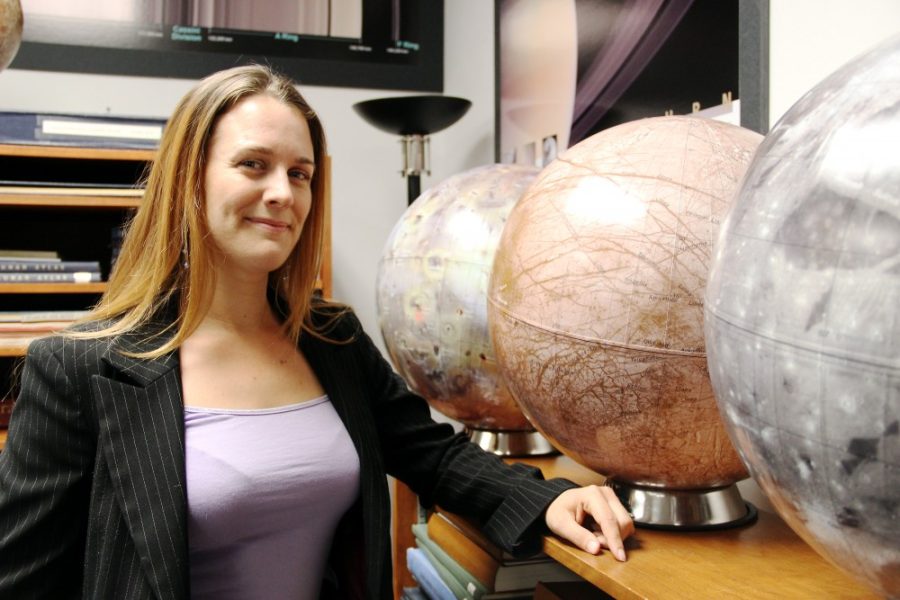Ice fields, jagged and fissured, stretch endlessly under a jet black sky. On the horizon, a brilliant sphere begins to rise. But it’s not the sun — it’s Jupiter.
The perspective is from Europa, one of the four moons of Jupiter that were discovered by Galileo in the 1600s. Since that time, astronomers have learned that Europa is a frozen water world with a 100-mile-deep ocean sandwiched between an icy crust and a rocky core.
One question remains hotly debated: How thick is Europa’s crust?
“It’s one of the big planetary science smackdowns at conferences,” said Veronica Bray, an associate staff scientist at the UA’s Lunar and Planetary Laboratory, adding that one of the reasons astronomers get so worked up about the ice sheet is that its thickness might determine whether or not life could exist on Europa.
By studying craters on the satellite’s surface, Bray was able to determine that the average thickness of the ice sheet is roughly 7 kilometers. Those findings were recently published in the scientific journal Icarus.
Many astronomers assume that for anything to be alive in the ocean — whether it’s a unicellular organism or a more complex creature — the ice would have to be thin enough for the liquid water to make contact with the surface, allowing nutrients to enter the ocean.
The battle lines were generally drawn along the 10-kilometer mark. One camp thought the ice was thinner, while the other predicted it to be thicker and probably unsuitable for life.
Bray’s research provides strong evidence for the thin-ice model, and the possibility of life on Europa.
“Our work shows that convection of the ice shell could have occurred, which means life in the subsurface ocean is more probable than it would be with a thick ice shell above it,” she said.
In order to determine the thickness of the ice, Bray looked at the shape and depth of the craters on Europa.
With no atmosphere to retain heat from the sun, Europa’s ice can drop to 200 degrees below zero, making it brittle and rock-like, Bray said. When a comet strikes such a surface, the edges of the crater cave inward. The amount of material that caves in depends on the temperature of the ice: The thinner the ice, the warmer it is, and the more it crumbles after impact, Bray said.
Bray analyzed the shapes of more than 60 craters using topographical models created by Paul Schenk, a staff scientist at the Lunar and Planetary Institute and co-author of the paper.
She then compared the crater trends to computer simulations of comets hitting the ice at different temperatures. By identifying the simulations that most resembled the actual craters, Bray could determine the average temperature at impact for the craters and therefore calculate the average thickness of the ice.
Richard Greenberg, a professor of planetary sciences and the author of two books on Europa, has long been a proponent of the thin-ice model.
He said he thinks that in the depths on one of Europa’s mammoth cracks, the ocean meets the surface, and something might even be swimming around down there.
“If evidence continues to mount that the ice is thin enough to form connections to the ocean,” Greenberg said, “it enhances the probability that there is life in that ocean.”
-Follow Mark Armao @MarkArmao









